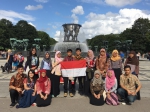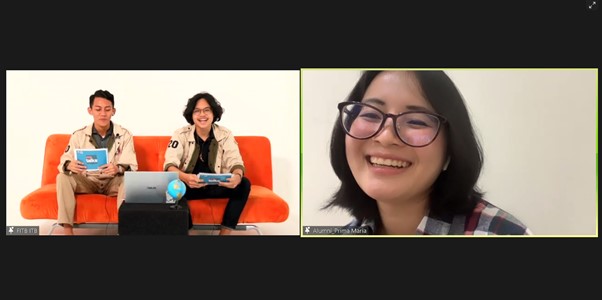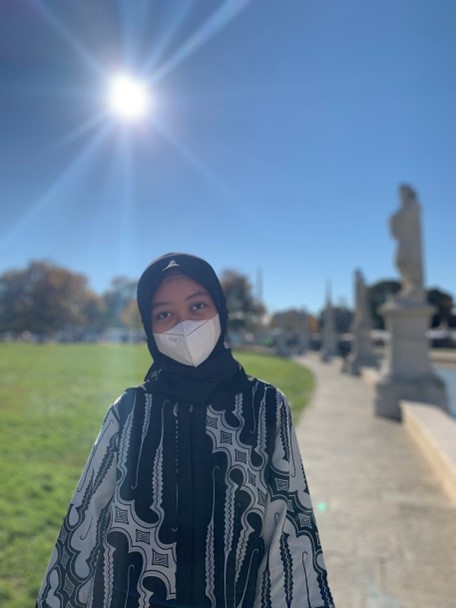Looking Back into Bosscha Observatory's Journey and the Mission for Celestial Observation
By Adi Permana
Editor Adi Permana

BANDUNG, itb.ac.id—Bosscha Observatory is a renowned astronomical observatory in Lembang, West Java. Established in 1923, it was the first observatory in Southeast Asia and one of the largest in Asia at the time. Bosscha Observatory was founded by Karel Albert Rudolf Bosscha, a Dutch businessman and philanthropist who was highly fascinated with astronomy.
As an astronomical observatory, Bosscha provided a place for astronomers around the world to conduct research and observations. In 1950s, Bosscha served as the base for the development of astronomy in Indonesia through education and training programs aimed at young Indonesian astronomers.
After Indonesia gained independence, Bosscha quickly became the nation's leading astronomical research center. In recent decades, the observatory received several renovations to upgrade its facilities and enhance its observational capabilities.
To this day, Bosscha Observatory has been continuously conducting astronomical observations and research. Consequently, it also has become one of the most popular tourist destinations for people who want to know more about astronomy, especially in Indonesia.
The Founders of Bosscha
Karel Albert Rudolf Bosscha was a Dutch scientist involved in the inception of the Bosscha Observatory. He played a crucial role in constructing the observatory as he led a team consisting of R.A. Kerkhoven and Joan George Erardus Gijsbertus Voûte.
Rudolf A. Kerkhoven was a Dutch physicist and astronomer who contributed to the development of the Bosscha Observatory. In addition to assisting in the manufacture and maintenance of Bosscha's telescopes, he directed various astronomical research and star observations. Kerkhoven also promoted the field of astronomy to society and expanded the international network for astronomical observations.
On the other hand, Joan George Erardus Gijsbertus Voûte was another Dutch scientist involved in the construction of the Bosscha Observatory. Together with Karel Albert Rudolf Bosscha dan R.A. Kerkhoven, he provided the necessary equipment and administered the observatory. Voûte ensured the observatory had modern and high-quality equipment, such as telescopes and other observational instruments. Moreover, he organized the observatory in such a way as to make it a comfortable place to study and promote astronomy.
Bosscha's Observation Instruments
The Bosscha Observatory in Bandung has several types of telescopes used to conduct celestial observations. The Zeiss Double-Refractor Telescope, for example, is the largest and oldest telescope in the observatory. Uniquely, this old telescope is still functioning properly even after 80 years of operation. The tube of the telescope actually consists of two main telescopes and one finder, capable of observing a wide field of view and weak stars. It is used to study astrometry, do double-star observations, measure the distances of stars, and many more.
The Bosscha Robotic Telescope is a new telescope featuring the Astograph CDK design. It is also equipped with a "truss" from carbon fiber material, an autofocus feature, and a temperature control system. This new telescope is utilized to study planets, survey asteroids, and observe variable stars.
Moreover, a different telescope called the STEVia telescope features a Schmidt-Cassegrain reflector system and is controlled remotely from long range. Its purpose is to search for exoplanets and variable stars as well as observe celestial objects and phenomena.
The GAO-ITB RTS Telescope is another Schmidt-Cassegrain reflector telescope featuring an 8-inch-diameter mirror that has been installed with a larger telescope diameter and a newer telescope mount. It is also fixed with a spectrograph built in collaboration between ITB and Kyoto Sangyo University.
Lastly, the Solar Telescope is a set of digital telescopes comprising three different Coronado telescopes and one image projection telescope of the sun. This instrument is realized and supported by various institutions and will be integral in the informal education offered by the Bosscha Observatory.
Reporter: Andri Maulana (Mining Engineering)
Translator: Ariq Ramadhan Teruna (Chemical Engineering '21)
(This article was compiled from various sources)

.jpg)
.jpg)
.png)
.jpg)
.jpg)



